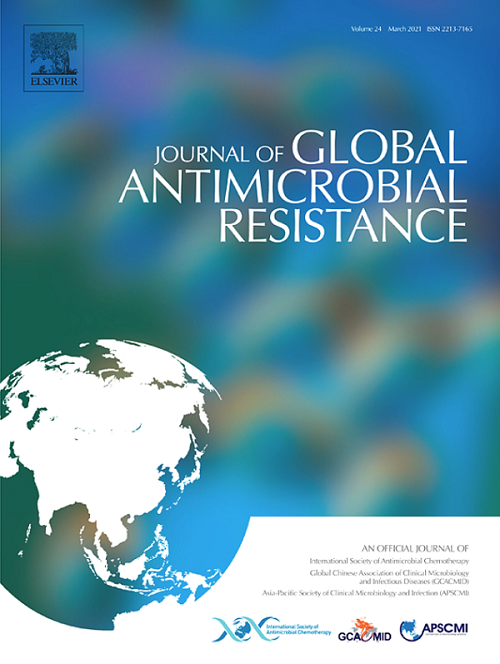Transmitted HIV-1 drug resistance in Estonian residents and Ukrainian refugees in 2020 and 2022
IF 3.7
3区 医学
Q2 INFECTIOUS DISEASES
引用次数: 0
Abstract
Objectives
We investigated the prevalence of drug resistance mutations (DRMs) in individuals newly diagnosed with HIV-1 in Estonia in 2020 and 2022, and in Ukrainian war refugees living with HIV who arrived in Estonia in 2022.
Methods
HIV-1 genomic RNA was sequenced in protease-reverse transcriptase and integrase (IN) regions. DRMs were determined separately by Stanford University CPR Tool and HIVdb Program. REGA HIV-1 Subtyping Tool and phylogenetic analysis were used for subtyping.
Results
Both regions were successfully sequenced in 79 and 53 individuals in 2020 and 2022 populations, respectively. The DRM rates were 11.4% [95% CI, 5.3%–20.5%] in 2020 and 13.2% [95% CI 5.5%–25.3%] in 2022. There was a low percentage of resistance to IN strand transfer inhibitors: 3.8% [95% CI, 0.8–10.7] in 2020 and 1.9% [95% CI, 0.05–10.1] in 2022. Most Ukrainian war refugees had undetectable VL (57/88, 65%), were women (63%) and majority were infected with subtype A6 viruses. The overall DRM rate for Ukrainian population was 11.5%.
Conclusions
Identifying HIV DRMs using HIVdb Program combined with CPR tools gives comprehensive overview of transmitted drug resistance. Resistance testing might be necessary before initiating antiretroviral therapy if the first-line treatment does not include PI or second-generation IN strand transfer inhibitors.

求助全文
约1分钟内获得全文
求助全文
来源期刊

Journal of global antimicrobial resistance
INFECTIOUS DISEASES-PHARMACOLOGY & PHARMACY
CiteScore
8.70
自引率
2.20%
发文量
285
审稿时长
34 weeks
期刊介绍:
The Journal of Global Antimicrobial Resistance (JGAR) is a quarterly online journal run by an international Editorial Board that focuses on the global spread of antibiotic-resistant microbes.
JGAR is a dedicated journal for all professionals working in research, health care, the environment and animal infection control, aiming to track the resistance threat worldwide and provides a single voice devoted to antimicrobial resistance (AMR).
Featuring peer-reviewed and up to date research articles, reviews, short notes and hot topics JGAR covers the key topics related to antibacterial, antiviral, antifungal and antiparasitic resistance.
 求助内容:
求助内容: 应助结果提醒方式:
应助结果提醒方式:


